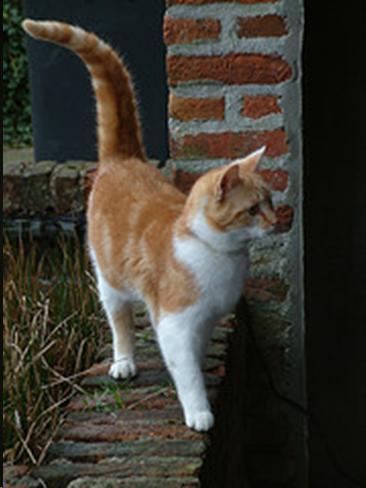Body Structure
Table of Contents
Text and Images from Slide

The Cat's Body
- Flexible structure
- Superb balance and coordination
- Flexibility
- Tail
- Vestibular apparatus
Lecture Notes
Let's begin with the body structure of the cat. As we move through the lecture always be thinking of how these animals originally lived as predators. Their body structure was built for speed and for the detection, pursuit, and capture of prey. This is reflected in the distinctive modifications of the cat's skeleton, which provides much flexibility to the animal.
Cats have a vestigial clavicle, which allows enhanced mobility of the front legs, and that aids in chasing and catching prey.
The joints between the vertebrae are also extremely flexible, and that helps with flexion and extension used in climbing, stalking, and pouncing.
The hind limbs are also specialized in cats in that the musculature provided tremendous power for jumping and leaping, as opposed to animals who can travel long distances.
Now this flexibility contributes to one of the trademarks of the cat—his superb balance and coordination. The tail certainly serves an important function in establishing and maintaining balance, as well as something called the vestibular apparatus. This is the main organ of balance in a cat's body, and it's a specialized structure located in the inner ear, which provides information to the brain regarding movement, changes in direction, acceleration, gravity, and linear motion.
